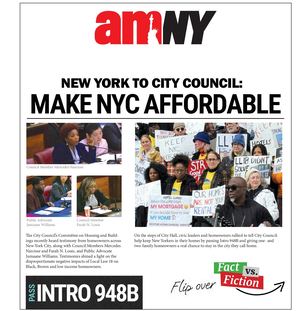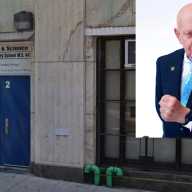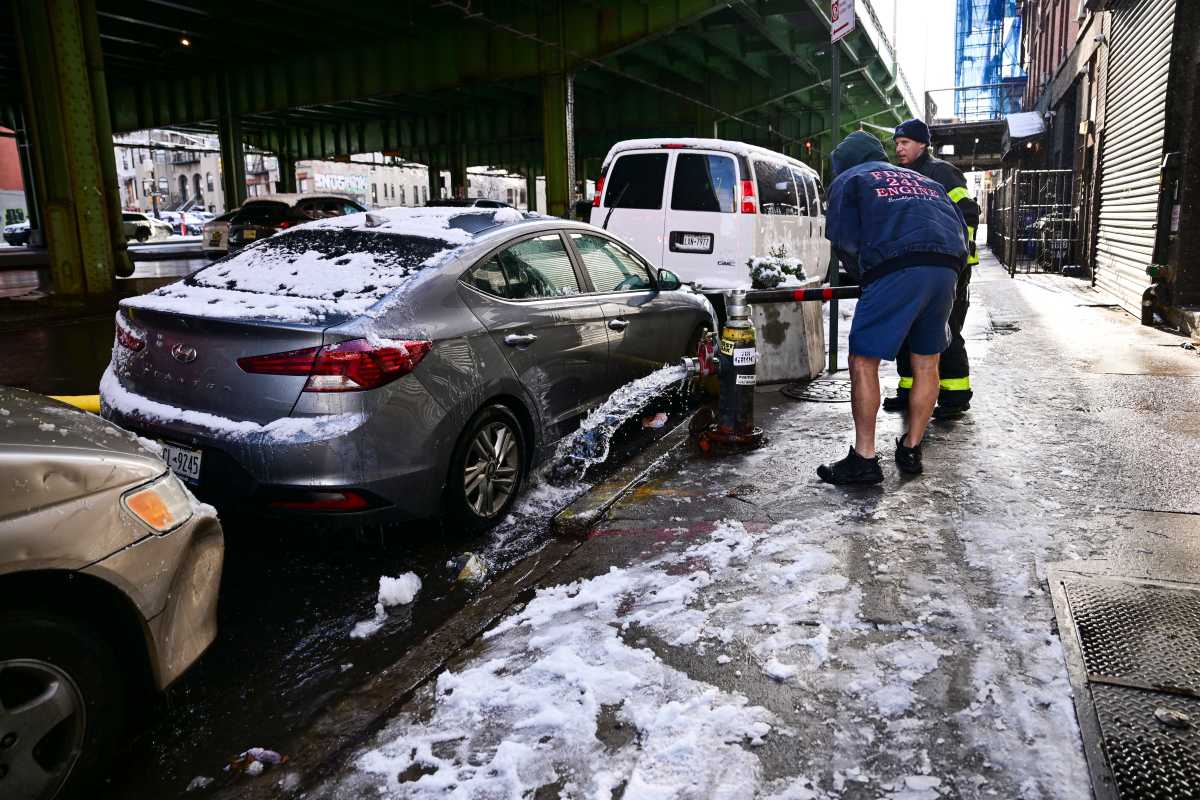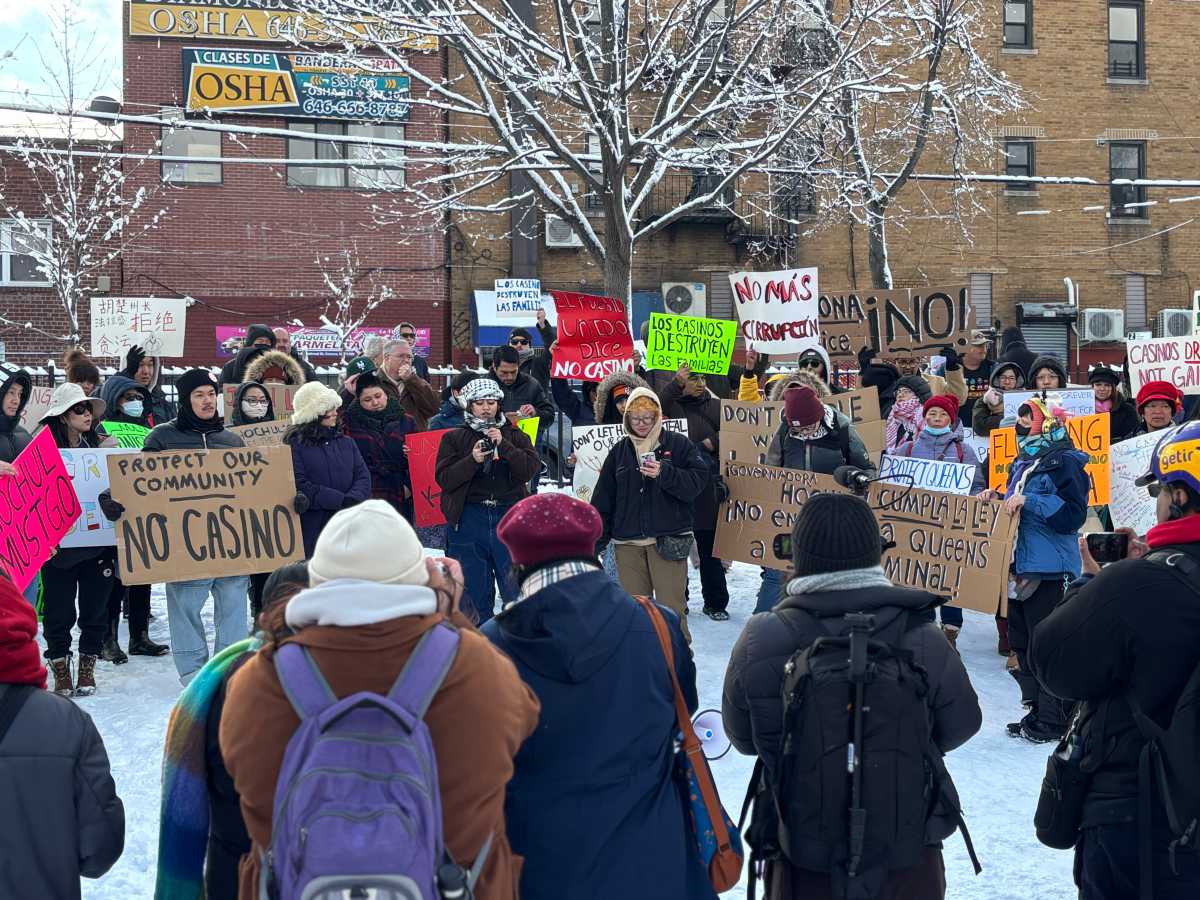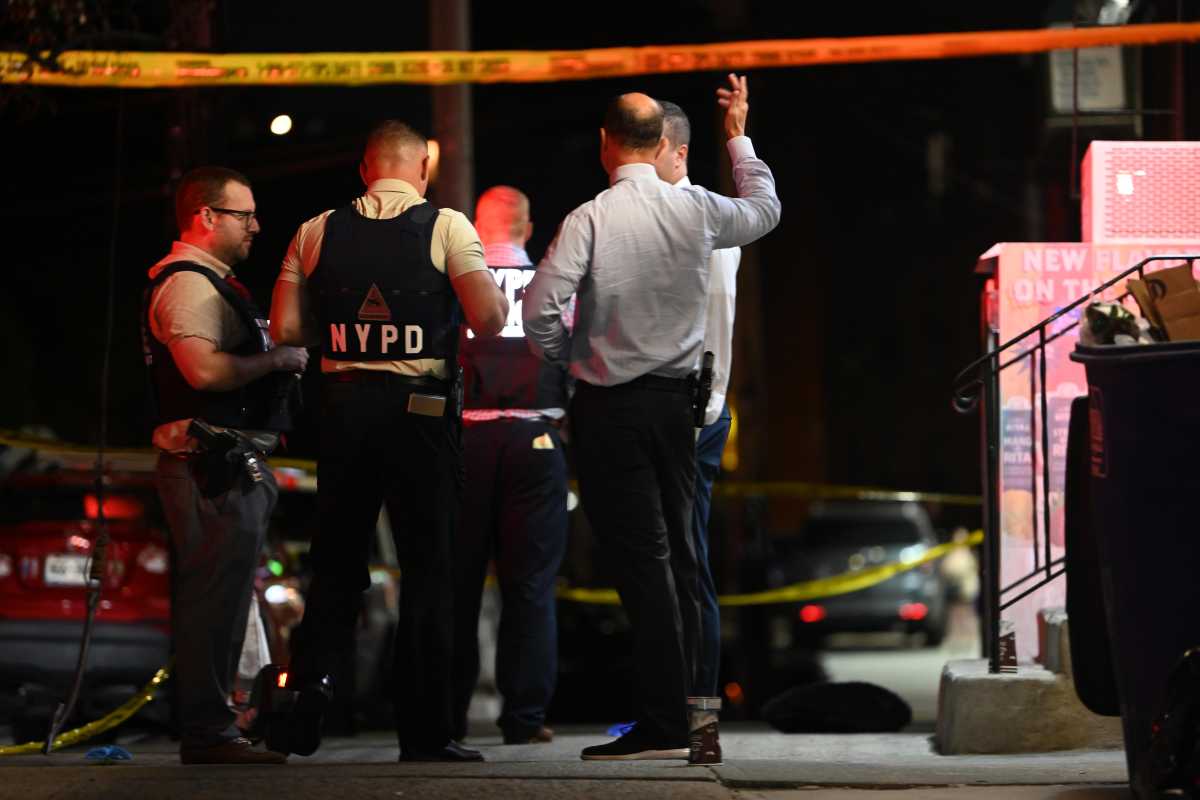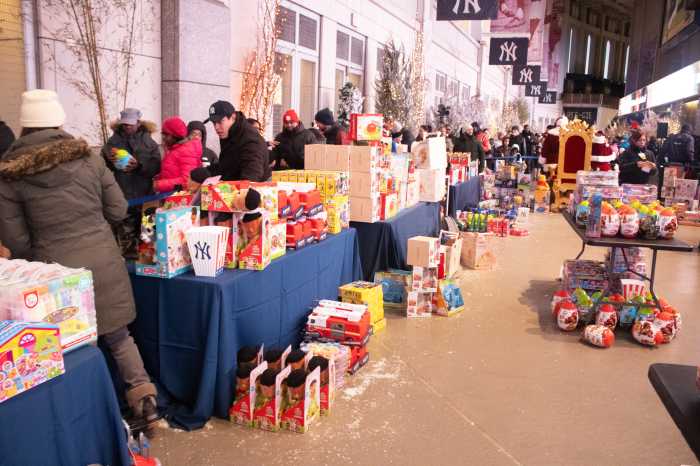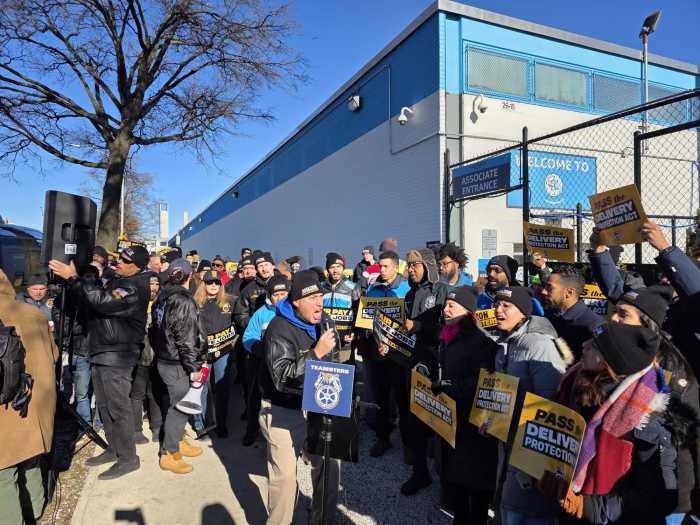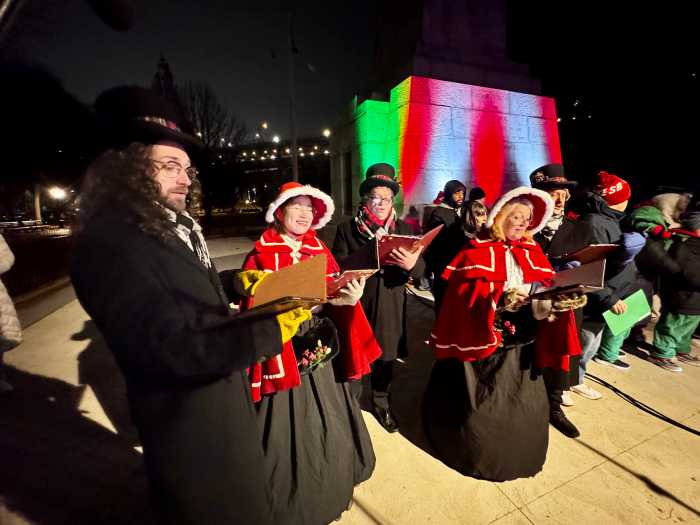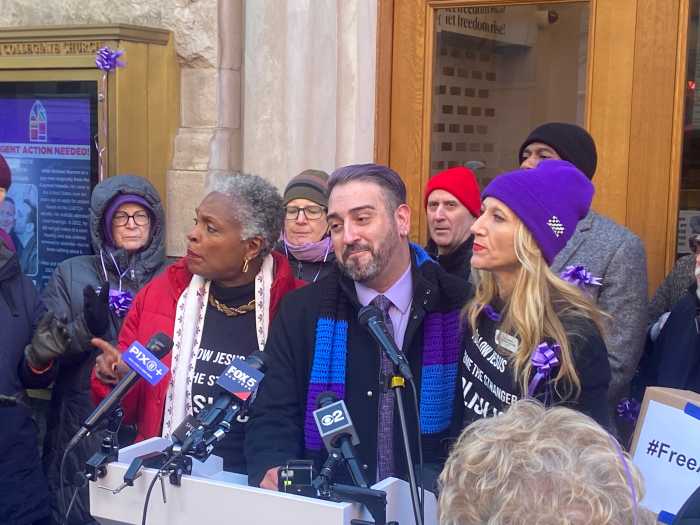
A fence in East Harlem gets a facelift every few months — a new mural painted by the Harlem Art Collective, which formed in 2015. They have painted Aztec symbols, for example, and a piece devoted to women’s rights on the barrier that hides a vacant lot. But this summer, artists painted “the most political” one yet, says a founder of the collective, O’Sheena Smith, 38. It’s a warning about gentrification, which the artists worry is coming to their neighborhood.
The mural begins near Second Avenue with a sulphuric Wall Street bull ripping through a subway map. In a middle panel, a giant Trojan horse rolls down a wide avenue, suited money-man and -woman types coming out of it, posting for-sale signs on vacant blocks. At the end, the giant word, “Gentrification,” and its dictionary definition. Below, there’s a bucket of chalk and a prompt encouraging passersby to write what gentrification means to them.
On a recent morning, the messages included “can’t afford to stay in the house I grew up in,” “White Devil!!!”, “Ethnic cleansing,” and “Desplazamiento,” which is Spanish for displacement, a concern that is coming to a head with the approaching prospect of a “neighborhood rezoning.”
A rising tide or a tidal wave?
In East Harlem, the city is considering a change in zoning rules, encouraging developers to build and allowing them to build bigger. In exchange for the new construction, the neighborhood would get concessions from developers (some form of affordable housing) and the city (health services or small plazas, for example).
The philosophy is central to Mayor Bill de Blasio’s plan to create a more affordable city by making it denser in some areas, but gaining more affordable units at the same time. The spread of gentrification — with its rising rents and costs — is inevitable in NYC, de Blasio argues, and the only way to mitigate is by building more housing and making some of it affordable.
Some residents in East Harlem see it differently: change of any kind, even controlled change, would just accelerate gentrification.
Newcomers are already paying more for nearby apartments and groceries, making prices rise. And many of the newcomers are white.
Michael Mitchell, one of the artists who worked on the mural, is not exactly a newcomer to the area — he has lived in NYC for 30 years. But on a recent visit to the mural a few blocks from his apartment, Mitchell, 64, explains some of the complexities of East Harlem gentrification. He said everyone should feel welcome in the neighborhood, as long as newcomers didn’t want to destroy its character: “as long as we’re all on the same page.” Though he is black, he didn’t want only black people to live in what has historically been a Hispanic neighborhood. But the concern is that not every newcomer would feel this way. He pointed and chuckled at a new addition to the artwork: a clay tablet with the words “I see white people.”
The mural depicts scenes of life residents want to keep: a mother selling lemonade, windows flying Puerto Rican, Mexican and American flags, two men sitting at a checkers board near a taqueria. (Mitchell quibbles that really, the game should be dominoes.)
In the mural, the tranquil scenes are threatened by the Trojan horse and the promises it brings. Mitchell painted one of the Trojan warriors: “I call him Mr. Got Rocks,” he says — a banker or real estate-type not interested in the neighborhood as a place to live or preserve or improve, “just interested in profit.”
What does gentrification mean to you?
As Mitchell explained the artwork, passersby stopped and wrote in new definitions of gentrification. He noted that in the neighborhood, the display can raise social awareness. As an example of murals’ powers, he says you rarely see graffiti tags on painted walls. On the gentrification one at least, there were none.
The mural’s designers say the project, which was put up in July, encouraged some artists and viewers to learn more about the rezoning process. That process included the East Harlem Neighborhood Plan, which gathered community input on the rezoning and was conducted by local leaders, including City Council Speaker Melissa Mark-Viverito. That plan then went to city officials. But the back and forth is ongoing, debates about proposed building heights and political decisions taking place at scheduled times, as opposed to the slow and sometimes hidden spread of gentrification.
Last week, dozens of residents crowded into an hours-long City Planning Commission hearing mostly to complain about the plan. Many of the complaints have been longstanding, from those who say that if developers are going to build expensive condos and apartments, then the neighborhood should get more than a pittance of affordable units and a park bench or two. Others, such as the advocacy group Movement for Justice in El Barrio, argue for the rezone to be dropped altogether due to gentrification concerns — hoping that nothing will change.
The commission is expected to consider information from that public hearing and others in the coming weeks. Then the issue will likely go to the City Council to be tweaked, approved or dropped, where its fate depends largely on the decision of the local council member, term-limited Mark-Viverito.
In the meantime, the mural will remain for at least a few months, tabulating new definitions of gentrification.
